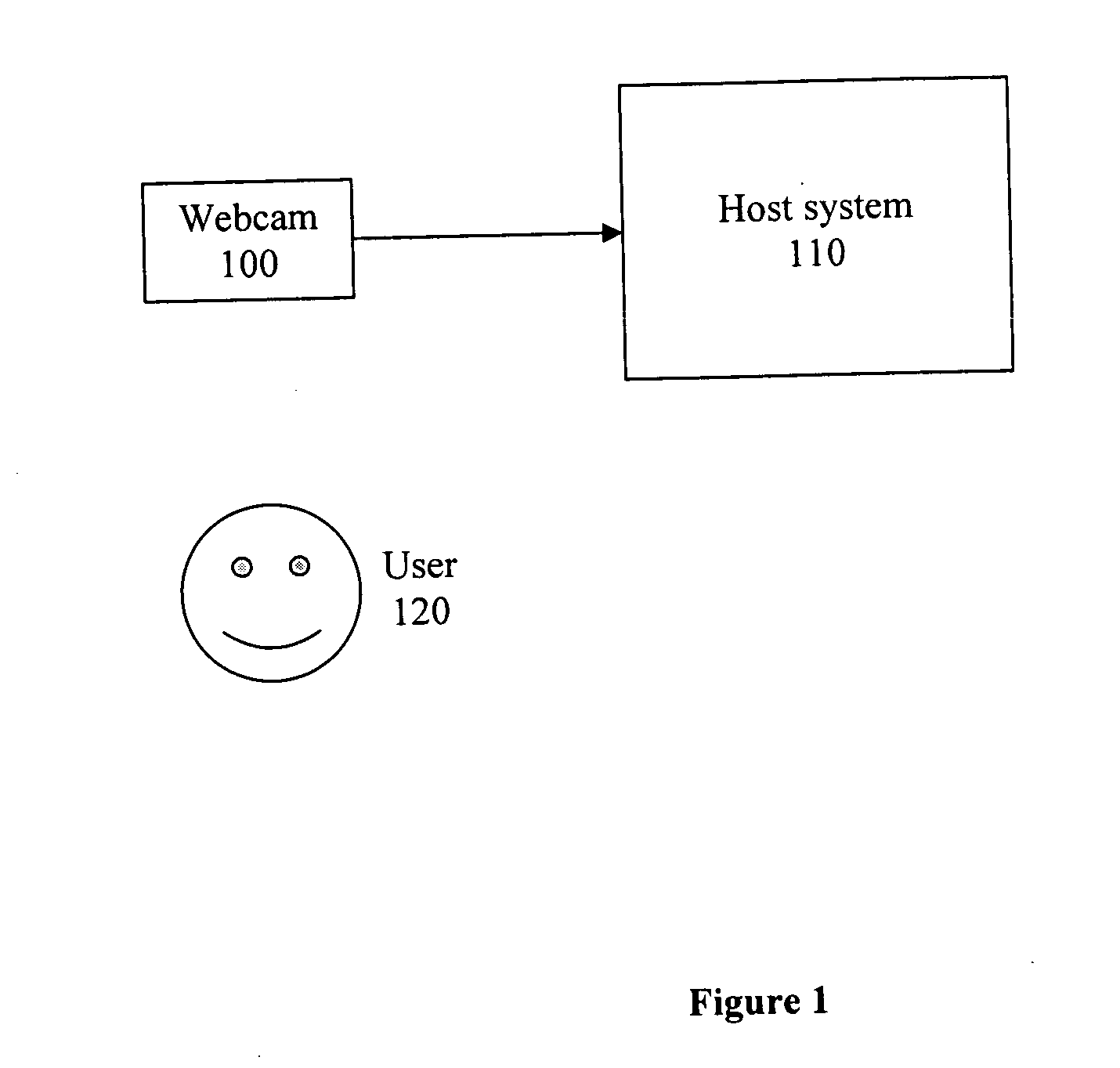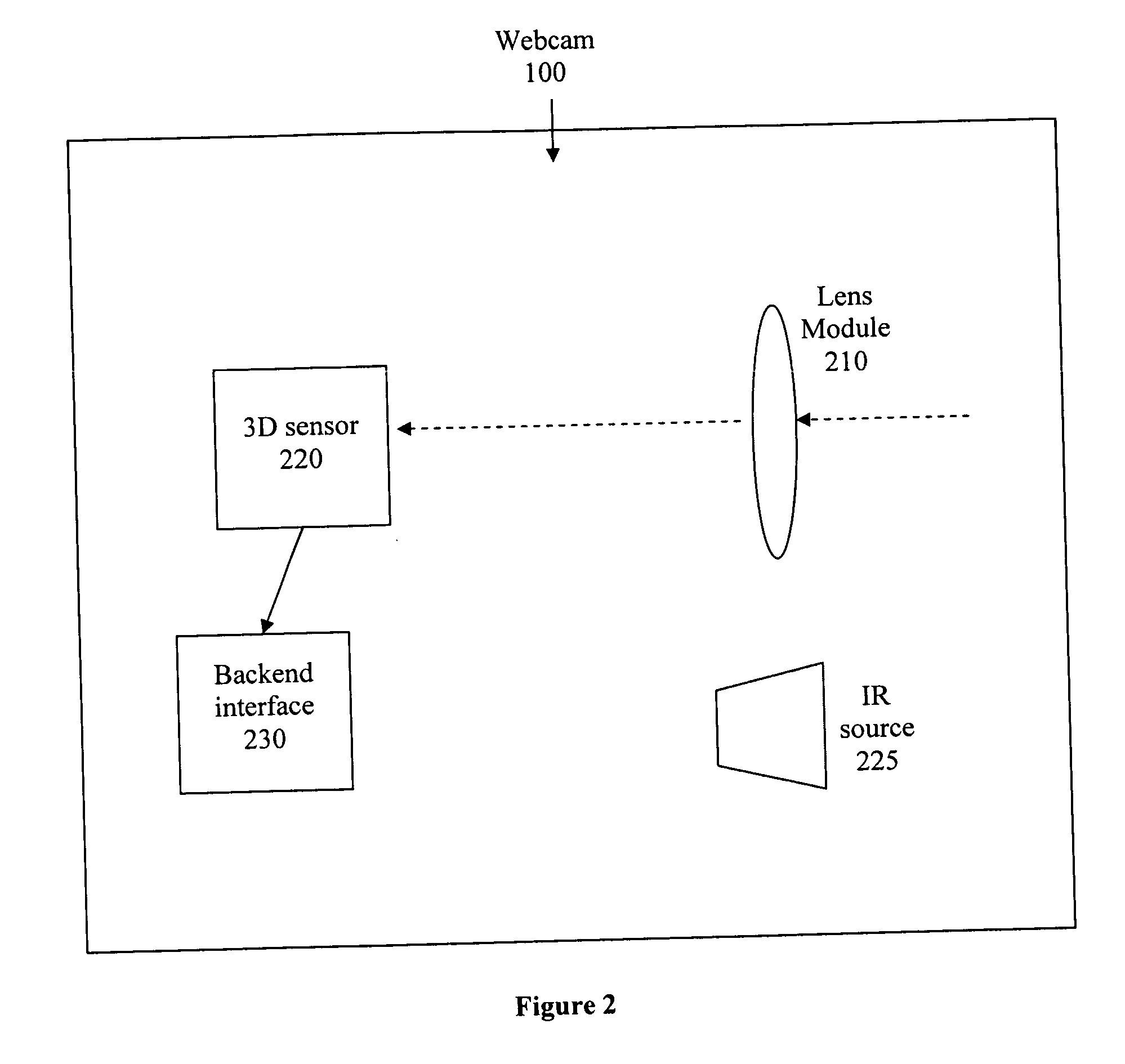Method and system for use of 3D sensors in an image capture device
a technology of image capture device and 3d sensor, which is applied in the field of digital cameras, can solve the problems of inability to directly obtain depth information, 2d sensors are unable to measure the distance from the sensor (depth), and 2d sensors lack the ability to measure the third dimension
- Summary
- Abstract
- Description
- Claims
- Application Information
AI Technical Summary
Benefits of technology
Problems solved by technology
Method used
Image
Examples
Embodiment Construction
[0025] The figures depict a preferred embodiment of the present invention for purposes of illustration only. It is noted that similar or like reference numbers in the figures may indicate similar or like functionality. One of skill in the art will readily recognize from the following discussion that alternative embodiments of the structures and methods disclosed herein may be employed without departing from the principles of the invention(s) herein. It is to be noted that the examples that follow focus on webcams, but that embodiments of the present invention could be applied to other image capturing devices as well.
[0026]FIG. 1 is a block diagram illustrating a possible usage scenario with an image capture device 100, a host system 110, and a user 120.
[0027] In one embodiment, the data captured by the image capture device 100 is still image data. In another embodiment, the data captured by the image capture device 100 is video data (accompanied in some cases by audio data). In ye...
PUM
 Login to View More
Login to View More Abstract
Description
Claims
Application Information
 Login to View More
Login to View More - R&D
- Intellectual Property
- Life Sciences
- Materials
- Tech Scout
- Unparalleled Data Quality
- Higher Quality Content
- 60% Fewer Hallucinations
Browse by: Latest US Patents, China's latest patents, Technical Efficacy Thesaurus, Application Domain, Technology Topic, Popular Technical Reports.
© 2025 PatSnap. All rights reserved.Legal|Privacy policy|Modern Slavery Act Transparency Statement|Sitemap|About US| Contact US: help@patsnap.com



